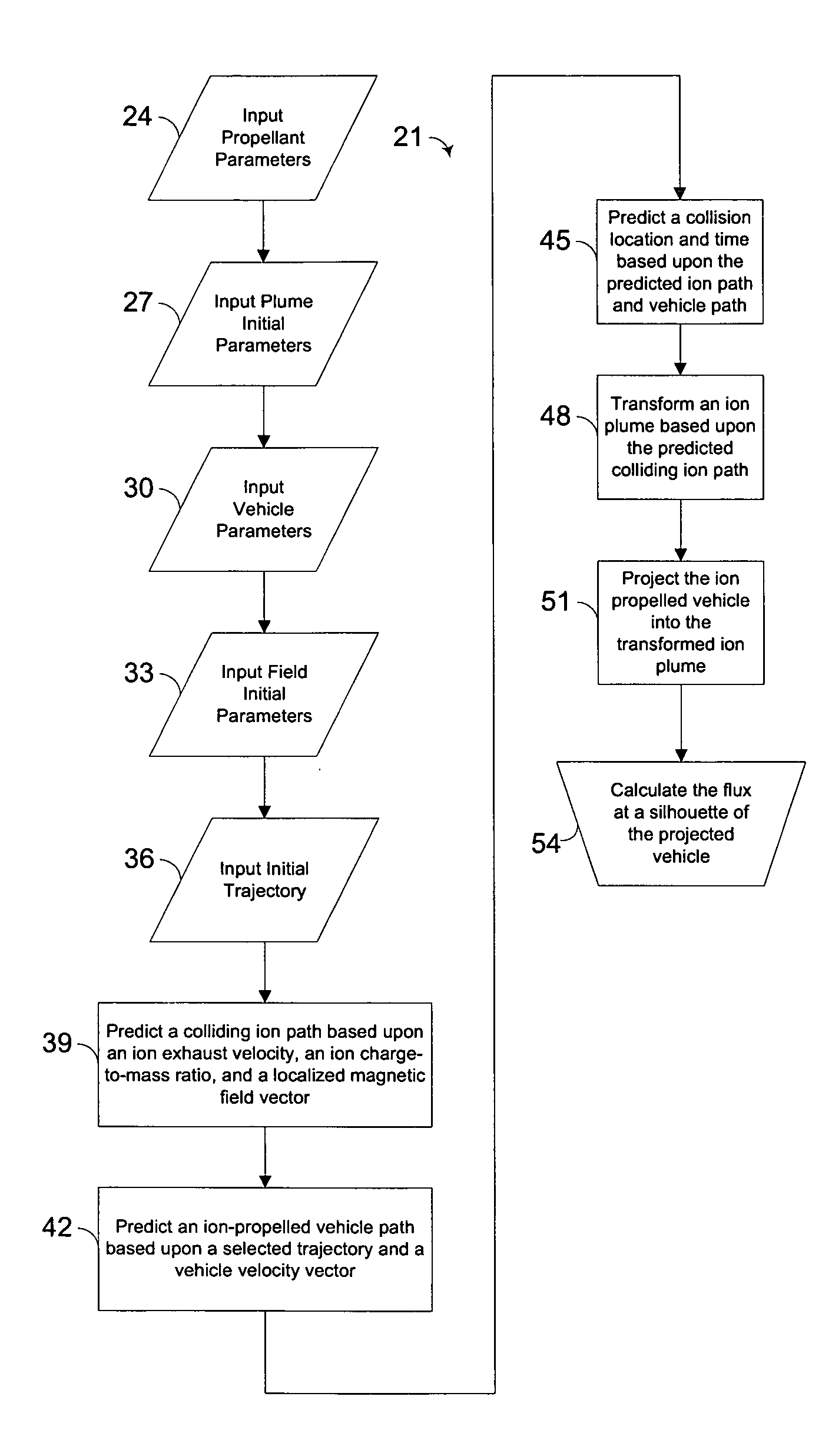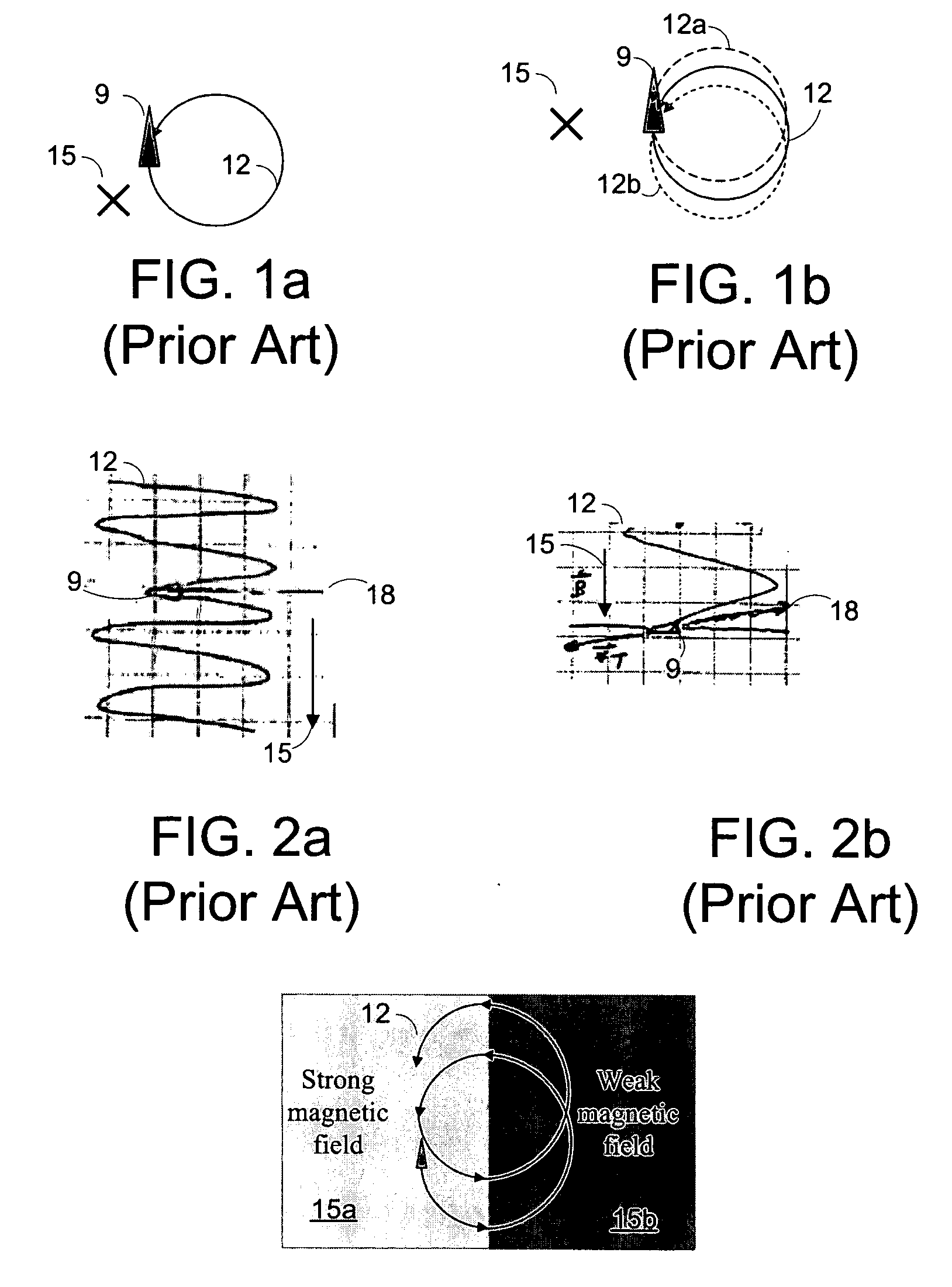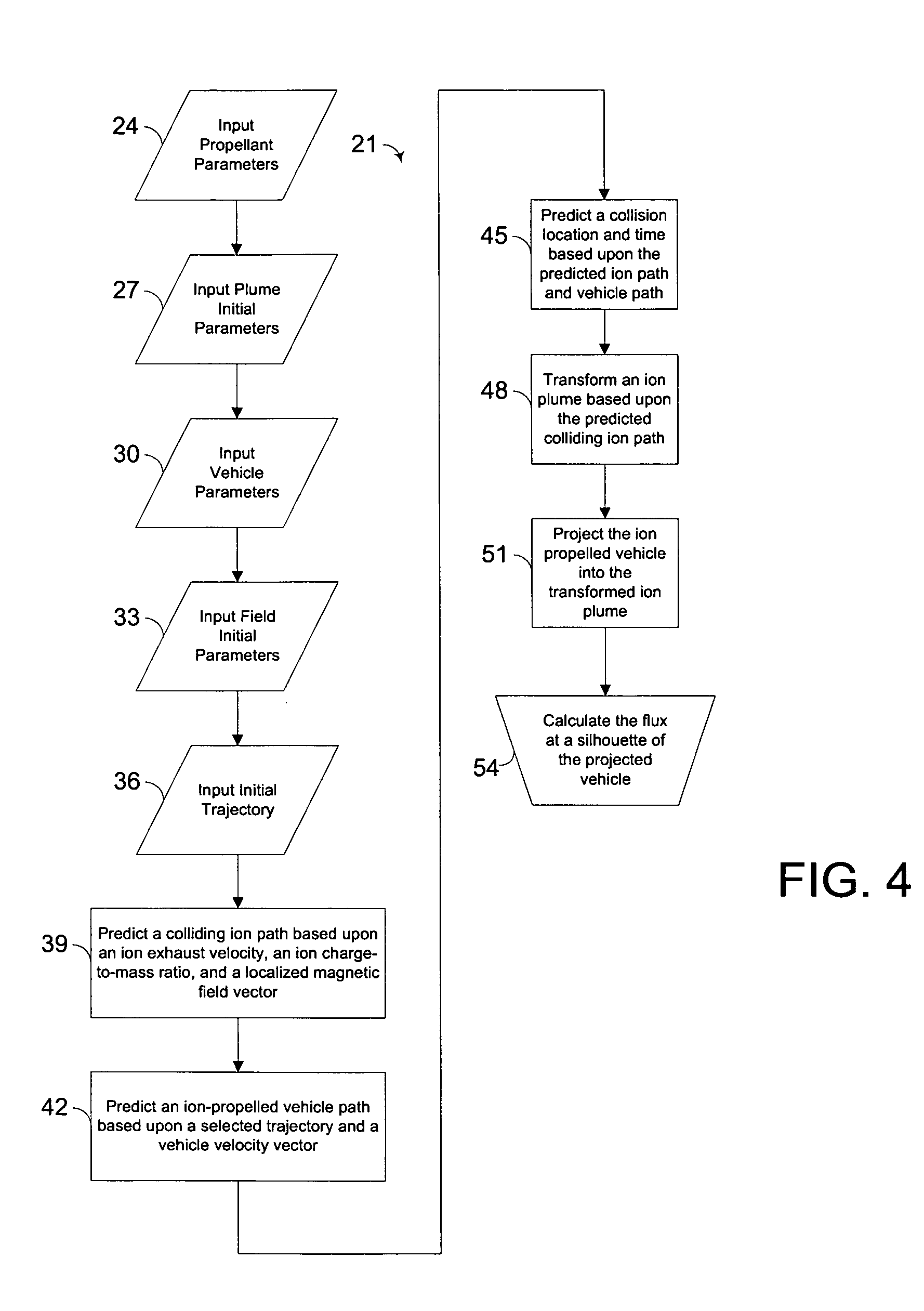Simulating ion impingement
a technology of ion impingement and simulation, which is applied in the direction of machines/engines, separation processes, instruments, etc., can solve the problems of limited performance of chemical thrusters in use today, relatively large ions, and loss of performance, so as to minimize spacecraft cross-section, reduce the amount of charge buildup, and dissipate the additional heat load of ion impingement
- Summary
- Abstract
- Description
- Claims
- Application Information
AI Technical Summary
Benefits of technology
Problems solved by technology
Method used
Image
Examples
Embodiment Construction
[0033] By way of overview, a method and a computer software program for predicting and modeling ion flux colliding with an ion-propelled vehicle traversing a magnetic field predicts a colliding ion path based upon an ion exhaust velocity, an ion charge-to-mass ratio, and a localized magnetic field vector. An ion-propelled vehicle path is predicted based upon a selected trajectory and a vehicle velocity vector. An ion plume is transformed based upon the predicted colliding ion path. The ion-propelled vehicle is projected into the transformed ion plume. The flux is calculated at a silhouette of the projected vehicle.
[0034] An important point is that although the ion beam diverges in two dimensions (i.e. azimuth and elevation relative to the beam axis), one dimension of divergence does not reduce the flux of ions returning to the spacecraft. Referring to FIG. 1a,
[0035] As indicated, one problem with the use of an ion thruster is damage and loss of performance due to impingement of io...
PUM
 Login to View More
Login to View More Abstract
Description
Claims
Application Information
 Login to View More
Login to View More - R&D
- Intellectual Property
- Life Sciences
- Materials
- Tech Scout
- Unparalleled Data Quality
- Higher Quality Content
- 60% Fewer Hallucinations
Browse by: Latest US Patents, China's latest patents, Technical Efficacy Thesaurus, Application Domain, Technology Topic, Popular Technical Reports.
© 2025 PatSnap. All rights reserved.Legal|Privacy policy|Modern Slavery Act Transparency Statement|Sitemap|About US| Contact US: help@patsnap.com



